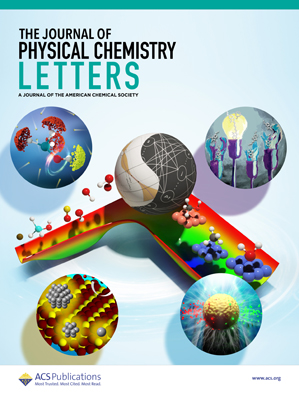Photophysical Properties of Tandem Quantum Defects in Carbon Nanotubes
IF 4.6
2区 化学
Q2 CHEMISTRY, PHYSICAL
引用次数: 0
Abstract
Single-walled carbon nanotubes (SWCNTs) are versatile near-infrared (NIR) fluorophores that can be chemically functionalized to create biosensors. Numerous noncovalent approaches were developed to detect analytes, but these design concepts can be susceptible to nonspecific binding and reduced stability. In contrast, covalent modification of SWCNTs with quantum defects can be utilized to tune their fluorescence properties and enable new molecular recognition concepts. Here, we present and assess four different synthetic pathways/sequences to modify SWCNTs covalently with both sp3 quantum defects and DNA-based guanine defects. We find that it is possible to create two defect types without disrupting the optical properties or chemical stability. Interestingly, the emission peak associated with sp3 defects (E11*) shifts around 3 nm when combined with guanine defects, indicating a coupling between the two defect types. However, it is far lower than the red-shift in bandgap-related emission (E11) by guanine quantum defects (40 nm). We furthermore demonstrate that combinations of defects can be used for (bio)sensing. In summary, the combination of multiple quantum defect types in SWCNTs provides a platform for multifunctional biosensors and a new design space that can be explored.

碳纳米管串联量子缺陷的光物理性质
单壁碳纳米管(SWCNTs)是多功能近红外(NIR)荧光团,可以化学功能化以创建生物传感器。人们开发了许多非共价方法来检测分析物,但这些设计概念容易受到非特异性结合和稳定性降低的影响。相比之下,具有量子缺陷的SWCNTs的共价修饰可用于调整其荧光特性并实现新的分子识别概念。在这里,我们提出并评估了四种不同的合成途径/序列,以sp3量子缺陷和基于dna的鸟嘌呤缺陷共价修饰SWCNTs。我们发现可以在不破坏光学性质或化学稳定性的情况下创建两种缺陷类型。有趣的是,当与鸟嘌呤缺陷结合时,sp3缺陷(E11*)的发射峰漂移约3nm,表明两种缺陷类型之间存在耦合。然而,它远低于鸟嘌呤量子缺陷(40 nm)带隙相关发射(E11)的红移。我们进一步证明,缺陷的组合可以用于(生物)传感。综上所述,SWCNTs中多种量子缺陷类型的组合为多功能生物传感器提供了一个平台和一个新的设计空间。
本文章由计算机程序翻译,如有差异,请以英文原文为准。
求助全文
约1分钟内获得全文
求助全文
来源期刊

The Journal of Physical Chemistry Letters
CHEMISTRY, PHYSICAL-NANOSCIENCE & NANOTECHNOLOGY
CiteScore
9.60
自引率
7.00%
发文量
1519
审稿时长
1.6 months
期刊介绍:
The Journal of Physical Chemistry (JPC) Letters is devoted to reporting new and original experimental and theoretical basic research of interest to physical chemists, biophysical chemists, chemical physicists, physicists, material scientists, and engineers. An important criterion for acceptance is that the paper reports a significant scientific advance and/or physical insight such that rapid publication is essential. Two issues of JPC Letters are published each month.
 求助内容:
求助内容: 应助结果提醒方式:
应助结果提醒方式:


